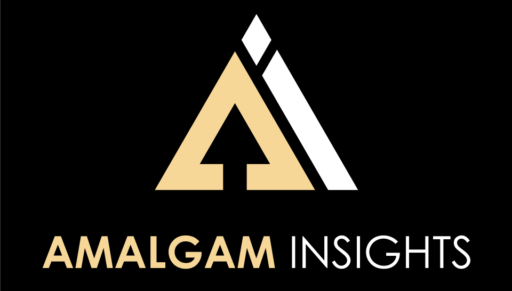 This blog is the first of a multi-blog series explaining the challenges of Enterprise Performance Management aka Financial Performance Management, Business Performance Management, Corporate Performance Management, Financial Planning and Analysis, and Planning, Budgeting, and Forecasting. Frankly, this list of names alone really helps explain a lot of the confusion. But one of the strangest aspects of this constant market renaming is that there are software and service vendors that literally provide Performance Management for Enterprises (so, literal Enterprise Performance Management) that refuse to call themselves this because of the confusion created by other industry analysts.
This blog is the first of a multi-blog series explaining the challenges of Enterprise Performance Management aka Financial Performance Management, Business Performance Management, Corporate Performance Management, Financial Planning and Analysis, and Planning, Budgeting, and Forecasting. Frankly, this list of names alone really helps explain a lot of the confusion. But one of the strangest aspects of this constant market renaming is that there are software and service vendors that literally provide Performance Management for Enterprises (so, literal Enterprise Performance Management) that refuse to call themselves this because of the confusion created by other industry analysts.
This blog series and the subsequent report seek to be a cure to this disease by exploring and defining Enterprise Performance Management more carefully and specifically so that companies can start using common-sense terms to describe their products once more.
Key Stakeholders: CFO, Chief Accounting Officer, Controllers, Finance Directors and Managers, Treasury Managers, Financial Risk Managers, Accounting Directors and Managers
Why It Matters: The need for true Enterprise Performance Management (EPM) has increased with the emergence of the strategic CFO and demands for cross-departmental business visibility. But market confusion has made EPM a very confusing term. Amalgam Insights is stepping up to fix this term and more accurately define the tasks and roles of EPM.
So, Why is Enterprise Performance Management So Confusing?
The market of Enterprise Performance Management has been a confusing one to follow over the past few years. During this decade, the functions of enterprise planning and budgeting have quickly evolved as the role of the CFO has transformed from chief beancounter to a chief strategist who has eclipsed the Chief Operating Officer and Chief Revenue Officer as the most important C-Level officer in the enterprise. The reason for this is simple: a company only goes as far as money allows it to.
The emergence of the strategic CFO has led to four interesting trends in the Finance Office.
- Financial officers now need to access non-financial data to support strategic needs and to track business progress in areas that are not purely financial in nature. This means that the CFO is looking for better data, improved integration between key data sources and applications, and more integrated planning between multiple departments.
- “Big Data” also becomes a big deal for the CFO, who must integrate relevant supply chain and manufacturing data, audio & video documents, external weather and government data, and other business descriptors that go outside of the traditional accounting entries used to build the balance sheet, income statement, and other traditional financial documents. To integrate the gigantic data volumes and non-traditional data formats associated with Big Data, planning tools must be scalable and flexible. This may mean going beyond the traditional OLAP cube to support semi-structured and unstructured data that provides business guidance.
- A quantitative approach to business management also requires a data-driven and analytic view of the business. After all, what is the point of data if it is not aligned and contextualized to the business. Behind the buzzwords, this means that the CFO must upgrade her tech skills and review college math including statistics and possibly combinatorics and linear algebra. In addition, the CFO needs to track all aspects of strategic finance, including consolidation & close, treasury management, risk management, and strategic business modeling capabilities.
- Finally, the CFO must think beyond data and consider the workflows associated with each key financial and operational task. This means the CFO is now also the Chief Process Officer, a role once assigned to the Chief Operating Officer, because of the CFO’s role in governance and strategy. Although accountants are not considered masters of operational management and supply chain, the modern CFO is slowly being cornered into this environment.
These drivers of strategy, data, and workflows force CFOs outside of their accounting and finance backgrounds to be true business managers. And in this context, it makes sense that Enterprise Performance Management is breaking up into multiple different paths to support the analytics, machine learning, workflows, document management, strategy, qualitative data, strategy, and portfolio management challenges that the modern strategic CFO faces.
Finance and accounting are evolving quickly in a world with new business models, massive data capacities, and complex analytical tools. But based on this fragmentation, it is difficult to imagine at first glance how any traditional planning and budgeting solution could effectively support all of these new tasks. So, in response, “EPM” solutions have started to go down four different paths. In upcoming reports, I’ll explain the paths that modern EPM solutions are taking to solve the strategic CFO’s dilemmas.

 Key Stakeholders: CHRO, Chief Learning Officers, Talent Acquisition Directors and Managers, Learning & Development Directors, Training Managers, Corporate Education Managers, LMS Managers
Key Stakeholders: CHRO, Chief Learning Officers, Talent Acquisition Directors and Managers, Learning & Development Directors, Training Managers, Corporate Education Managers, LMS Managers

